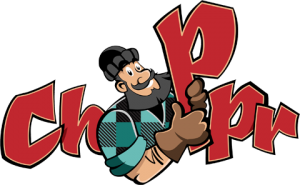on April 6, 2020

WordPress is one of the most versatile and user-friendly platforms for creating websites. With endless customization options, it empowers users to design websites that reflect their brand identity and functionality requirements. However, customizing WordPress effectively requires the right strategies and tools to ensure your site remains fast, secure, and scalable. Below you will find some WordPress customization tips.
This guide shares essential WordPress customization tips to help you enhance your site while maintaining its performance and usability.
Why WordPress Customization Is Important
Customizing your WordPress site allows you to tailor it to your unique needs and preferences.
- Reflect Brand Identity: Custom themes and designs create a unique online presence.
- Enhance Functionality: Add features to meet specific user requirements.
- Improve User Experience: Tailor navigation, layout, and content for your audience.
- Boost SEO: Optimize structure and content to rank higher on search engines.
Effective customization ensures that your WordPress site aligns with your goals while delivering a seamless experience for visitors.
Start with the Right Theme
Choosing the right theme is the foundation of WordPress customization.
Select a Customizable Theme
Opt for themes that offer extensive customization options without requiring advanced coding skills. Themes like Astra or GeneratePress are lightweight and highly customizable.
Use a Child Theme
A child theme allows you to modify your site’s design without affecting the original theme’s files. This ensures that updates won’t overwrite your changes. Learn more about child themes at WordPress Codex.
Utilize Page Builders
Page builders simplify customization by providing drag-and-drop interfaces to create layouts.
Elementor
Elementor is a popular page builder with intuitive tools for designing pages and adding custom elements.
WPBakery
WPBakery Page Builder offers advanced customization options and integrates seamlessly with many themes. Explore it at WPBakery.
Customize the Header and Footer
Your website’s header and footer are key elements that impact user experience and branding.
Edit with Theme Customizer
Access the WordPress Theme Customizer to modify the header and footer. You can add menus, logos, and widgets.
Use Plugins
Plugins like Header Footer Code Manager allow you to add custom scripts or widgets to these areas effortlessly.
Enhance Functionality with Plugins
Plugins extend the functionality of your WordPress site.
SEO Plugins
Use plugins like Yoast SEO to optimize your site for search engines.
Security Plugins
Protect your site with tools like Wordfence or Sucuri.
Performance Plugins
Speed up your site with caching plugins like WP Rocket or W3 Total Cache.
Optimize Your Content Layout
Customizing content layout improves readability and engagement.
Add Custom Post Types
Use plugins like Custom Post Type UI to create custom post types for portfolios, testimonials, or products.
Use Grid Layouts
Create visually appealing layouts with grid plugins like Essential Grid.
Implement Advanced Custom Fields
Advanced Custom Fields (ACF) allows you to add customized fields to your posts and pages. This is especially useful for creating complex layouts or adding unique metadata.
Customize Your Menu
Menus play a vital role in navigation and user experience.
Create Custom Menus
Use the WordPress menu editor to organize your site’s navigation. Add custom links, categories, and pages.
Add Mega Menus
For complex websites, plugins like Max Mega Menu allow you to design large, multi-column menus.
Focus on Mobile Responsiveness
A responsive design ensures your site looks great on all devices.
Test Responsiveness
Use tools like Responsively to preview your site on various screen sizes.
Adjust with Media Queries
If you’re comfortable with CSS, use media queries to tweak styles for specific screen sizes.
@media (max-width: 768px) {
header {
font-size: 16px;
}
}
Optimize Website Performance
Customization should not come at the cost of performance.
Compress Images
Use plugins like Smush to compress images and improve load times.
Enable Caching
Caching plugins like WP Rocket store static versions of your site to speed up delivery.
Minify CSS and JavaScript
Minify files to reduce load times using plugins like Autoptimize.
Add Custom Widgets
Widgets allow you to display specific content in your site’s sidebar or footer.
Use Default Widgets
WordPress offers built-in widgets for categories, search bars, and recent posts.
Add Custom Widgets
Plugins like Widget Options help you create and manage custom widgets.
Personalize the Login Page
A branded login page enhances user experience for team members or clients.
Customize with Plugins
Plugins like Custom Login Page Customizer let you modify the login form and background.
Monitor Analytics
Tracking your site’s performance ensures your customizations align with user behavior.
Use Google Analytics
Install Google Analytics using the Site Kit by Google plugin.
Monitor User Engagement
Tools like Hotjar provide heatmaps and user behavior insights to refine your design.
Stay Updated with WordPress Trends
Keep up with trends and updates to ensure your site remains modern and functional.
Follow WordPress Blogs
Resources like the Official WordPress Blog share updates and best practices.
Join WordPress Communities
Forums and groups like WordPress Support offer advice and inspiration.
Conclusion
By following these WordPress customization tips, you can transform your site into a unique, user-friendly, and performance-optimized platform. From choosing the right theme to leveraging advanced plugins and tools, every step helps you align your site with your goals.
Whether you’re a beginner or a seasoned WordPress user, consistent updates, performance monitoring, and design improvements will ensure your website remains a valuable asset. Use these tips to customize your site the right way and achieve success online.
